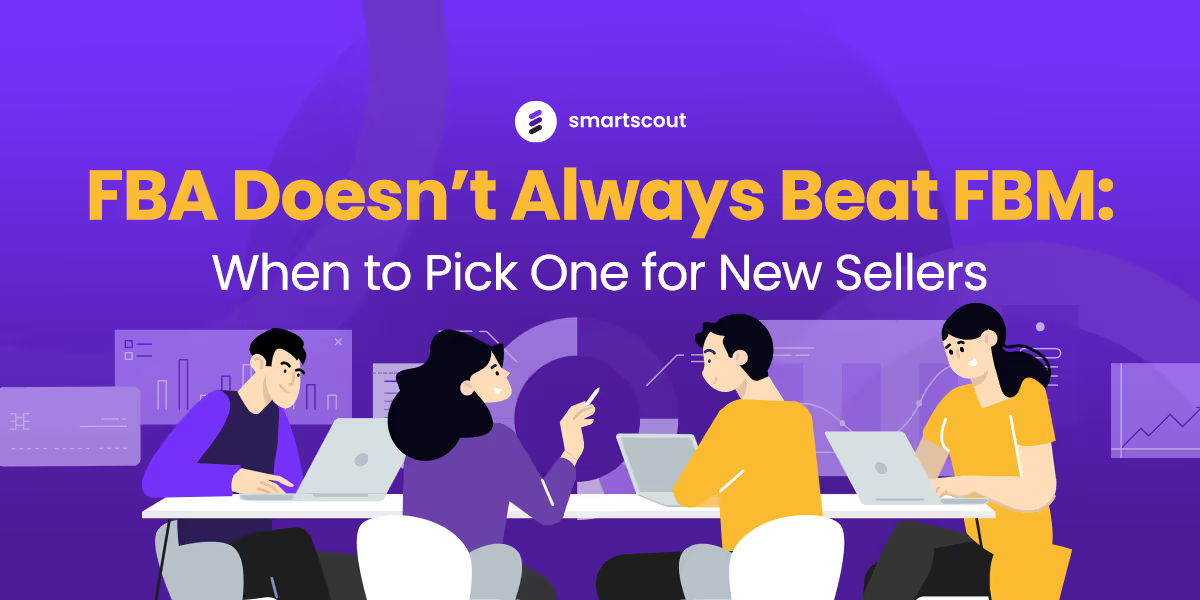Imagine launching your Amazon store and immediately tapping into Amazon's vast infrastructure.
Sounds tempting, right? That's what FBA promises.
But while many sellers are singing praises for FBA, there's another contender in the ring: FBM. And it's not going down without a fight.
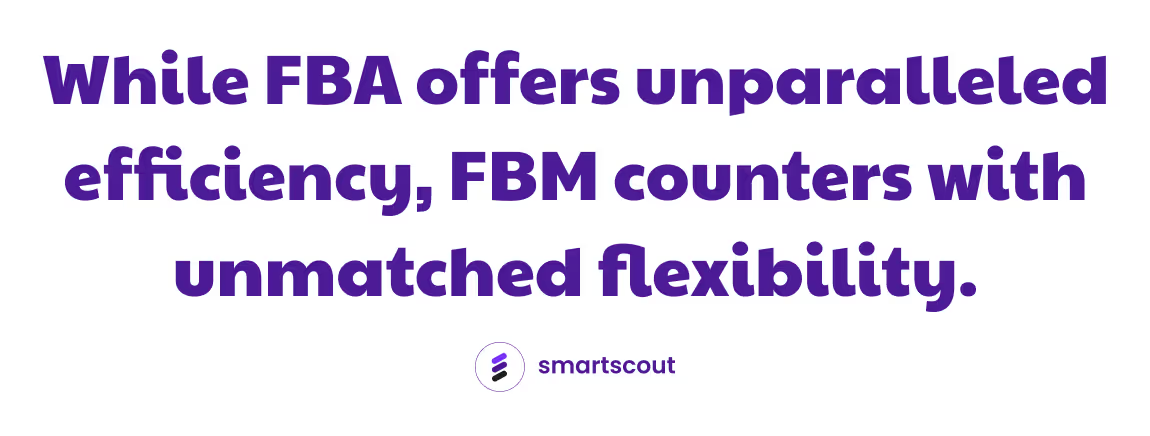
The Core Difference Between FBA and FBM
At its heart, the choice between the two fulfillment methods is about who handles your products' storage, shipping, and returns.
- FBA: Amazon handles everything - storing, packing, shipping products to customers, and managing returns.
- FBM: Sellers take charge of storing, packing, shipping products, and handling returns themselves.
At first glance, you might think FBA is the superior option. That’s not always the case. Yes, there are more sellers who are using FBA than those who use FBM.
However, numbers alone don't tell the whole story. Each method serves a unique purpose and caters to different needs: while FBA offers unparalleled efficiency, FBM counters with unmatched flexibility.
That's precisely why FBM still exists. Many sellers continued to value the autonomy and direct customer engagement that FBM provided, even in the face of FBA's growing popularity.
So with both methods offering distinct advantages, the burning question arises: "Which fulfillment method is the best fit for a particular seller?"
Here’s the short answer:
- Choose FBA if you want Amazon to handle fulfillment so you can focus on growing your business.
- Choose FBM if you value direct control over your operations, want to offer a personalized touch, or have products that don't fit the FBA mold.
To dig deeper into this debate, we'll compare FBA against FBM in a head-to-head matchup, evaluating them on four criteria: costs, sales speed, effort, and control.
Costs: FBA Dominates with Small, Lightweight, & High-Volume Products
Consider a scenario where you sell a sleek, wireless earbud with 300 units ordered weekly (or 1,200 units monthly).

With Amazon's sweet deal on bulk shipping, FBA becomes a real money-saver. If you try to manage all those orders with FBM, you’ll burn more cash and kill more time. Clearly, FBA has the edge here.
FBA Estimated Costs:
- Fulfillment: $2.50/unit (picking, packing, shipping) = $3,000/month.
- Storage: $0.75/cubic foot/month (each unit is 0.01 cubic foot) = $9/month.
- Inbound Shipping: $0.50/unit = $600/month.
FBM Estimated Costs:
- Shipping: $4.00/unit (without Amazon's discount) = $4,800/month.
- Packaging: $0.75/unit = $900/month.
- Storage: $1.00/cubic foot/month = $12/month.
- Labor: $0.50/unit = $600/month.
✏️ Note: These figures are just estimates. Actual costs may vary based on specific agreements, regional considerations, and other factors.

For products like these, FBA often yields significant monthly savings. Not just for earbuds but for other small, lightweight, high-volume items as well.
FBM Shines When Selling Large Items
Selling big, slow-moving items via FBA is a recipe for losing money. Imagine selling ten patio furniture sets every month, which adds up to 120 sets a year.

Let's break it down with a scenario: Imagine selling 10 patio furniture sets every month, which adds up to 120 sets a year.
Here's a quick look at the costs:
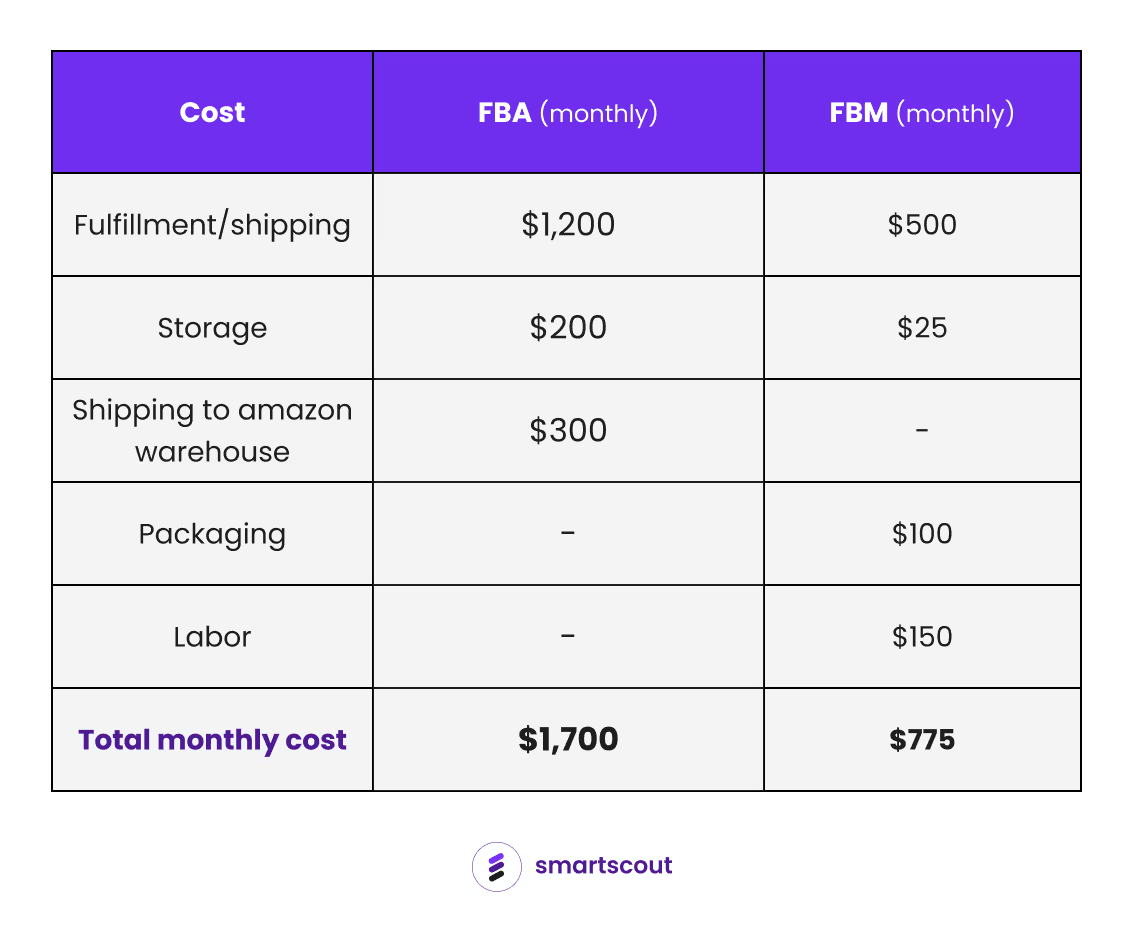
By choosing FBM for those hefty items like patio furniture, you're pocketing an extra $925 every month. And much of that saving comes from dodging those high storage and shipping fees.
Low Sales Volume Items: FBM Wins Again
Slow-moving products in FBA can bleed you dry with their relentless storage fees. Take handcrafted wooden chess sets, for example, selling about five units monthly.
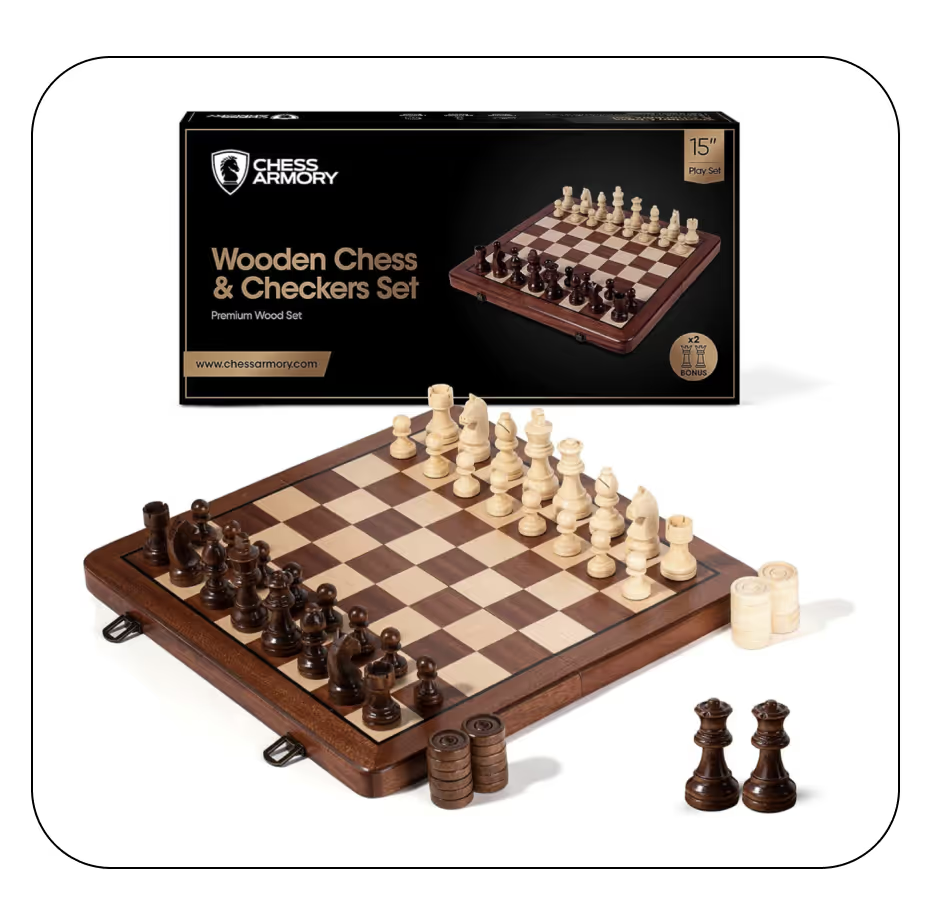
Here's what your costs might look like for selling five chess sets every month (that's 60 in a year):
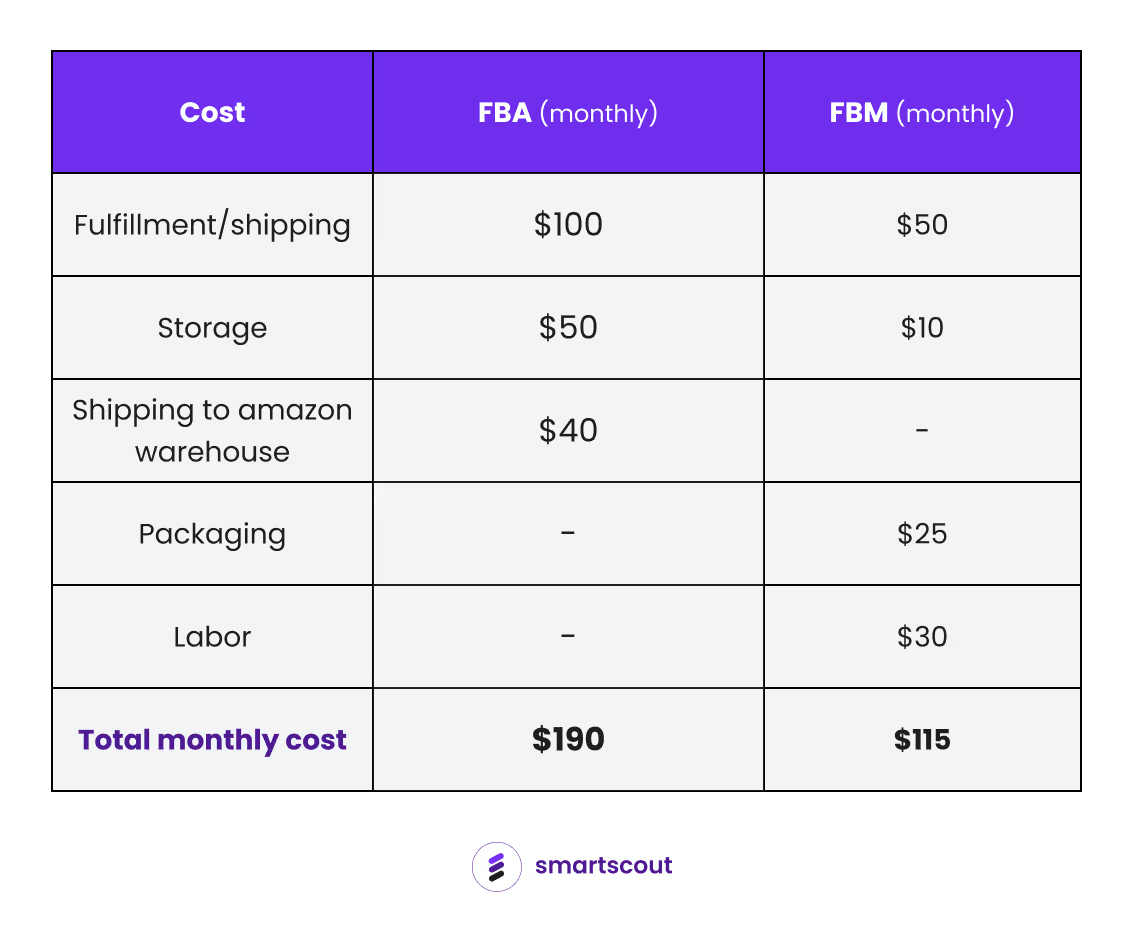
With FBM, you save $75 monthly, largely thanks to lower storage fees.
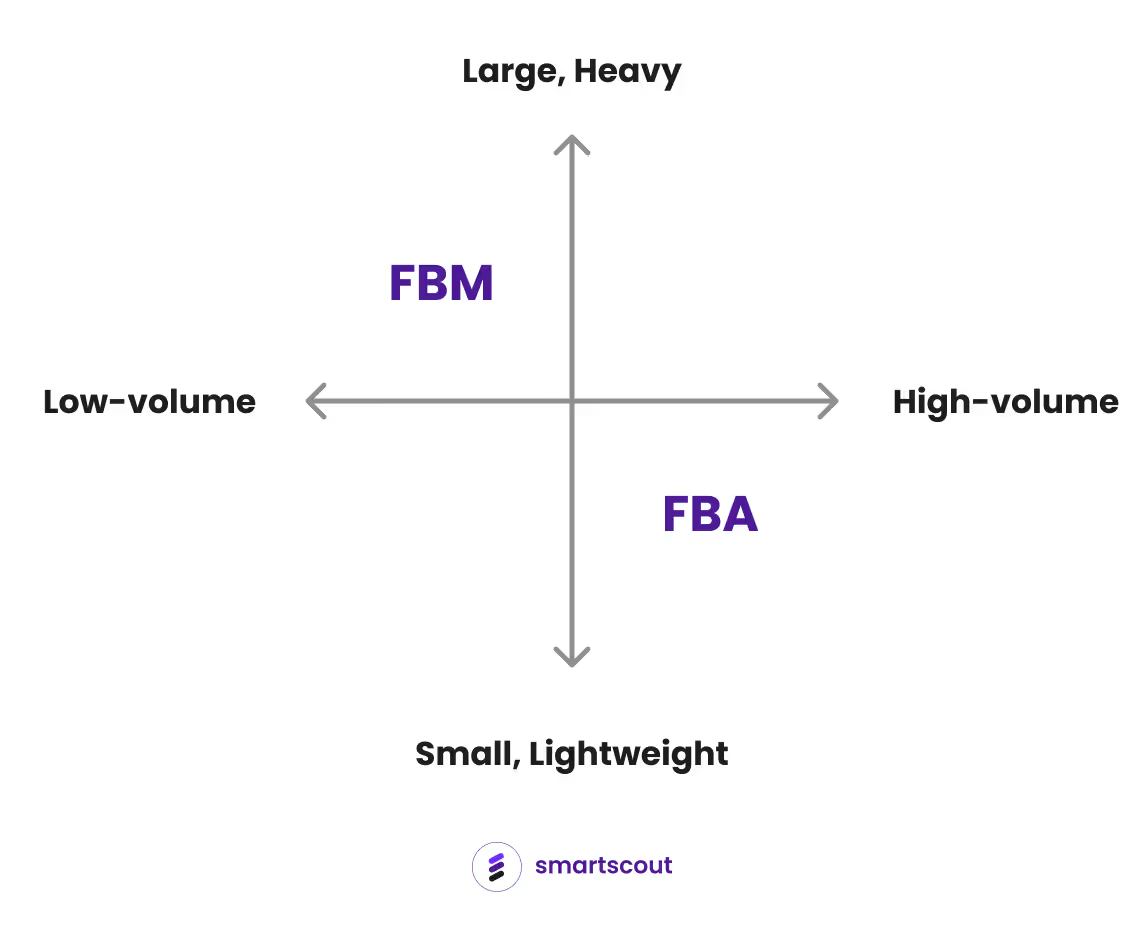
Sales Speed: FBA Zooms Past FBM
Why are so many sellers flocking to FBA for their bestsellers, while keeping their slow movers with FBM? It's because FBA has a couple of aces up its sleeve when it comes to sales speed: Prime shipping and that ever-elusive Buy Box.
The Prime Shipping Magic
FBA products automatically get the Prime badge, a magnet for the massive Prime member base. To put it in perspective, the US boasts about 167 million Prime members. They predominantly filter their searches for Prime items, drawn by speedy, free shipping.
In 2021, US Prime members splurged an average of $1,100 annually, dwarfing the $500 spent by non-Prime shoppers. By March 2023, Prime members were behind a staggering 71% of all Amazon purchases.
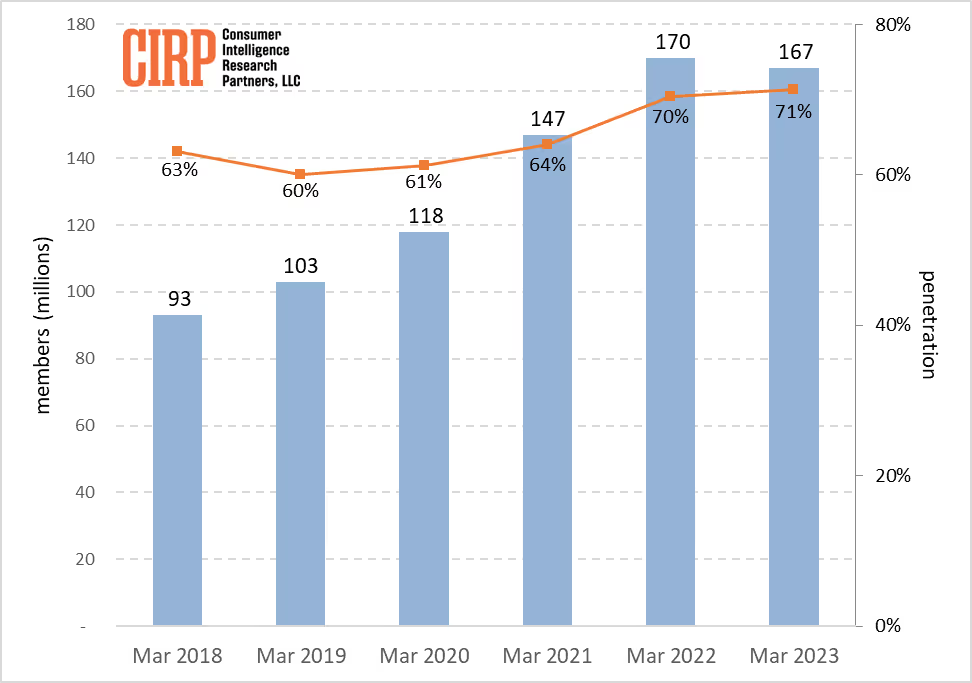
By choosing FBA, your products don't just tap into a broader market; they appeal to a segment with a proven propensity to spend. The figures underline the sales potential of Prime.
✍️ Heads up: Contrary to popular belief, FBM products can also be Prime-eligible. But FBM sellers must ace Amazon's rigorous shipping criteria to earn the "Seller Fulfilled Prime" badge. It's an opportunity but with the added pressure of upholding top-notch standards.
The Buy Box Advantage
On the right side of Amazon's product pages, there's a coveted section known as the Buy Box. This is where people click "Add to Cart" or "Buy Now" if they want to make a purchase. While many sellers might offer the same item, only one claims this prime spot at a time.
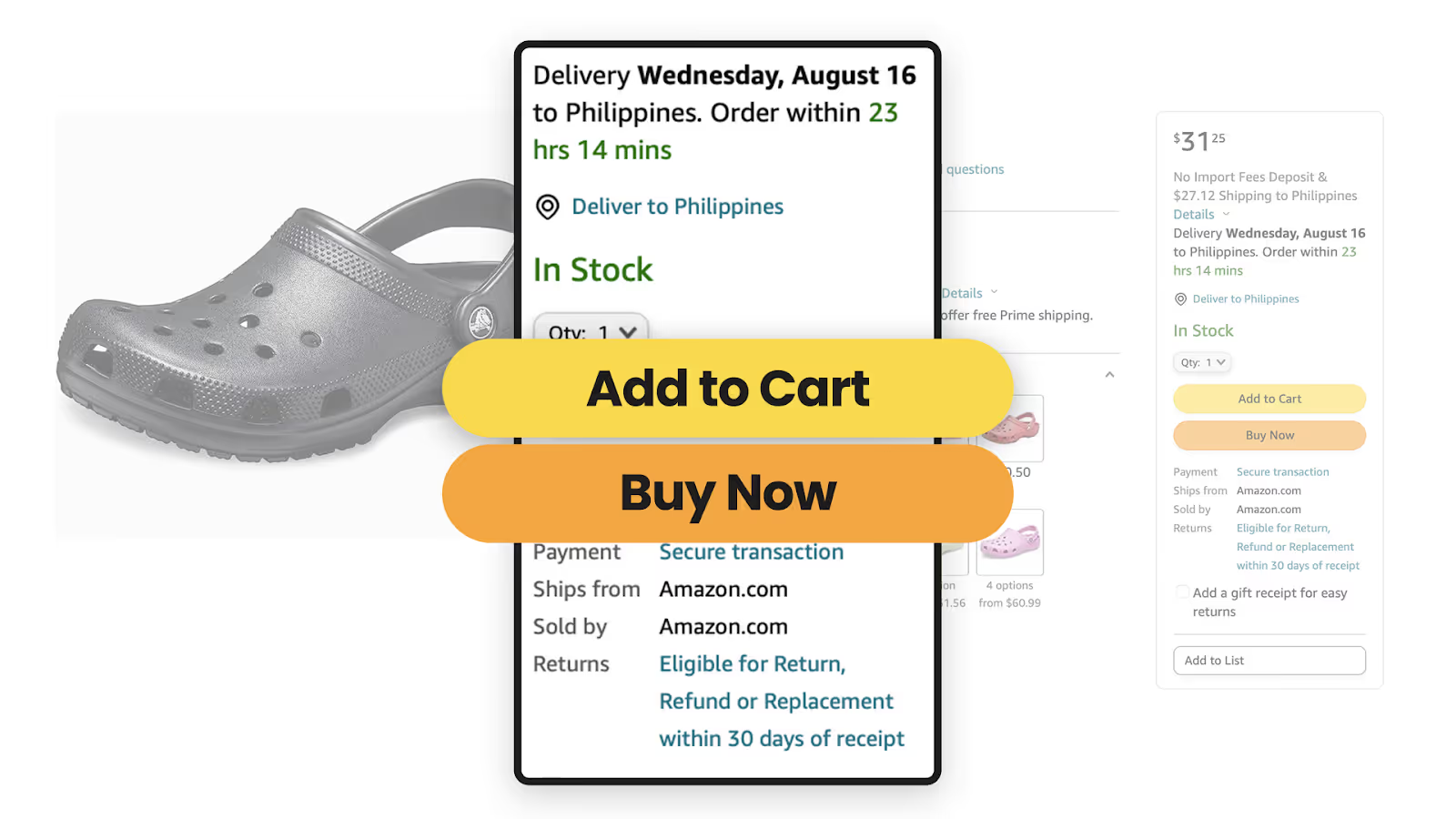
About 82 out of 100 of Amazon's sales originate from the Buy Box, marking it as a seller's hotspot. FBA sellers often have an edge here. Amazon trusts its own fulfillment system, so it tends to favor FBA listings, driving up their sales.
Effort: FBA Lightens the Load
With FBA, sellers can shift their focus from the nitty-gritty of packing and shipping to expanding their business. Instead of spending hours each day packing boxes, dealing with shipping labels, and handling returns, an FBA seller can use that time to research new products or improve their marketing strategies.
On the flip side, FBM requires a hands-on approach. Sellers have the reins, which means more control but also more tasks. Think of an FBM seller as a jack-of-all-trades, managing inventory, ensuring secure packaging, and racing against the clock to meet shipping deadlines.
Breaking it Down: FBA vs. FBM
- FBA: Amazon takes on most of the heavy lifting. They store your products, pack them when an order comes in, ship them out, and handle any returns. It's like having an invisible team working behind the scenes — no need to hire extra hands or manage storage space.
- FBM: Sellers are at the heart of the operation. It's a DIY approach. Every order that comes in? That's on the seller to process, pack, and ship. And if a customer wants to return something, the seller manages that too. It's a more immersive experience, but it demands a lot of time and energy.
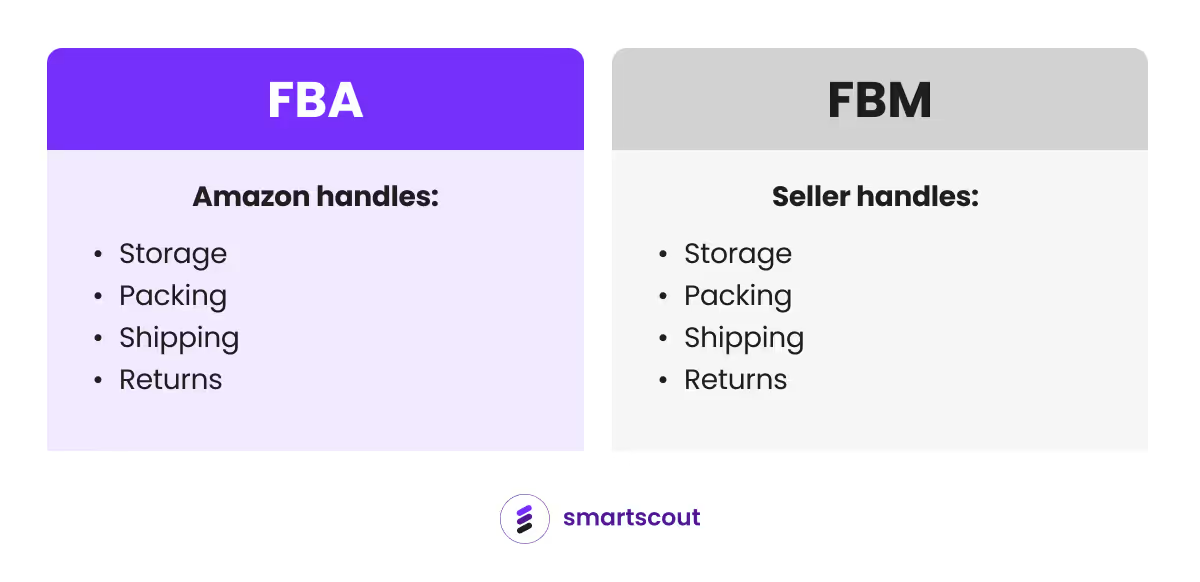
The clear winner? FBA. It's a ticket to focus on growth without getting bogged down in daily logistics.
Inventory Control: FBM’s Redemption
FBM makes a strong comeback after a beatdown in the last two rounds.
Here’s why:
FBM’s Strengths
- Avoid extra costs: Bypass Amazon's storage fees and adapt storage based on real-time market demands.
- Direct oversight: Physically see, manage, and adjust your stock levels.
- Custom systems: Implement your own inventory management strategies, decide on reorder points, and address discrepancies on the spot.
FBA’s Weaknesses
- Potential missed sales: Discrepancies in stock reports might lead to missed opportunities.
- Dependence on Amazon: Relying on Amazon for inventory can sometimes result in stock-level issues.
- Operational hurdles: Making quick adjustments or retrieving products from Amazon can be cumbersome and costly.
The Bottomline: If inventory control is your top priority, FBM offers a level of direct management and flexibility that FBA can't match.
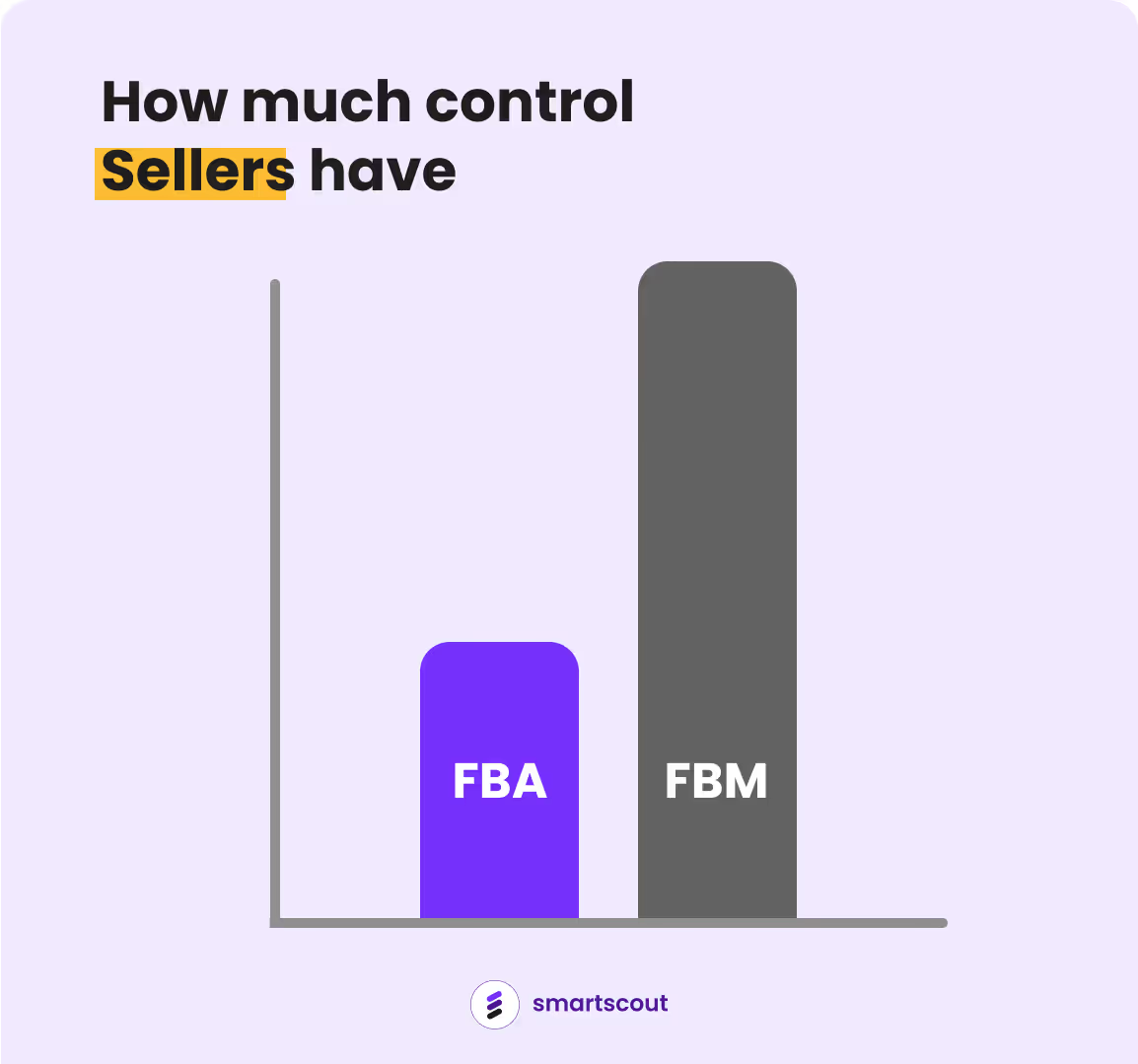
Which Is Better for New Sellers, FBA or FBM?
FBA is ideal if:
- You want to tap into Amazon Prime's fast, reliable shipping.
- You'd prefer Amazon to handle storage, shipping, customer service, and returns.
- You're dealing with high sales volumes and need efficient order processing.
- You aim to boost product visibility and have a higher chance of winning the Buy Box.
- You wish to focus more on product development and marketing, leaving logistics to Amazon.
- Rapid market presence and leveraging the appeal of Amazon Prime is your goal.
- You're planning for scalability and want to utilize Amazon's vast infrastructure.
FBM is ideal if:
- You want to control branding, packaging, and customer interactions completely.
- You have limited inventory or an existing storage solution, helping you avoid Amazon's storage fees.
- You sell unique or handcrafted items that require special care and handling.
- Building and nurturing direct customer relationships is a priority for you.
- You're operating on a tight budget and find self-fulfillment more cost-effective.
- You're seeking flexibility in scaling and might consider transitioning to FBA in the future.


